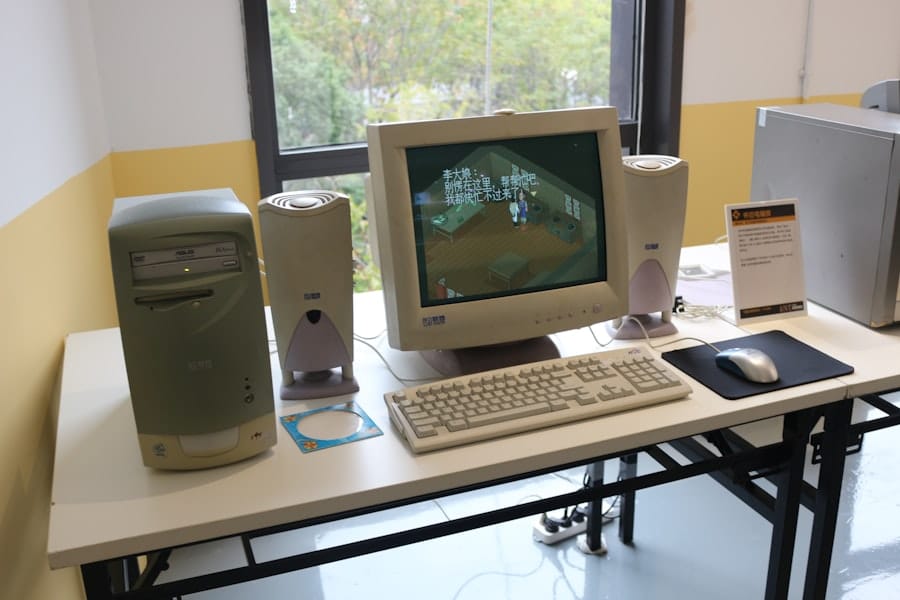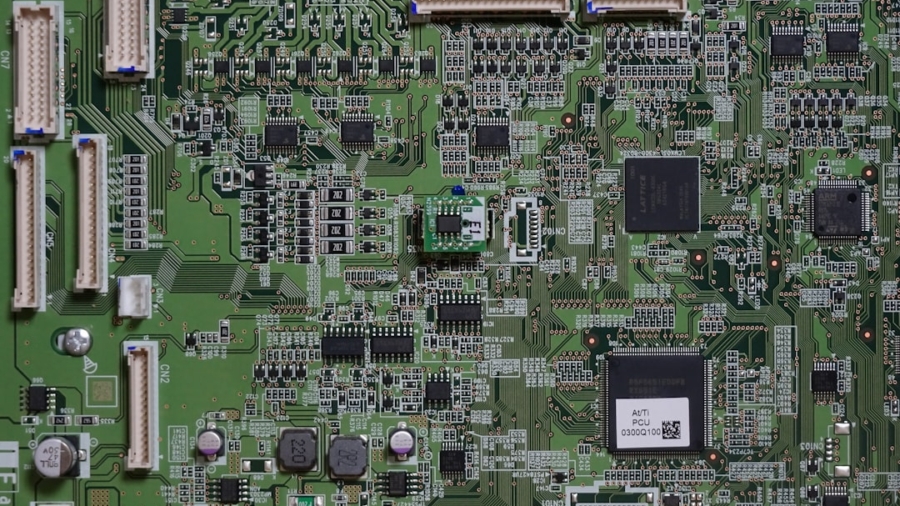Ambient computing refers to a paradigm in which technology seamlessly integrates into the environment, allowing for a more intuitive and natural interaction between humans and machines. This concept envisions a world where devices and systems are embedded in everyday objects and surroundings, enabling them to respond to user needs without requiring explicit commands. The essence of ambient computing lies in its ability to create a context-aware environment that anticipates user preferences and behaviors, thereby enhancing the overall experience of technology.
At its core, ambient computing leverages various technologies, including the Internet of Things (IoT), artificial intelligence (AI), machine learning, and natural language processing. These technologies work in concert to create an ecosystem where devices communicate with one another and with users in a fluid manner. For instance, smart home devices can learn from user habits, adjusting lighting, temperature, and even entertainment options based on the time of day or the presence of individuals in a room.
This level of integration not only simplifies daily tasks but also fosters a more personalized interaction with technology.
Key Takeaways
- Ambient computing refers to the integration of technology into the environment to create a seamless and intuitive user experience.
- Current applications of ambient computing include smart home devices, wearable technology, and voice-activated assistants.
- Ambient computing has the potential to simplify everyday tasks, improve efficiency, and enhance convenience in daily life.
- Challenges and concerns of ambient computing include security risks, data privacy issues, and potential over-reliance on technology.
- The future of ambient computing in smart homes includes the development of interconnected devices and personalized automation for a more comfortable and efficient living environment.
Current Applications of Ambient Computing
The applications of ambient computing are diverse and span various sectors, including home automation, healthcare, and urban planning. In smart homes, ambient computing manifests through devices like smart speakers, thermostats, and security systems that work together to create a cohesive living environment. For example, a smart thermostat can learn when residents are typically home or away and adjust heating or cooling accordingly, optimizing energy usage while maintaining comfort.
Similarly, smart lighting systems can automatically adjust brightness based on the time of day or the presence of people in a room. In healthcare, ambient computing is making significant strides by enhancing patient monitoring and care delivery. Wearable devices equipped with sensors can continuously track vital signs and other health metrics, sending real-time data to healthcare providers.
This allows for proactive interventions when anomalies are detected, improving patient outcomes. For instance, a smartwatch that monitors heart rate can alert both the wearer and their physician if it detects irregularities, facilitating timely medical responses. Furthermore, ambient computing can streamline administrative tasks in healthcare settings, allowing professionals to focus more on patient care rather than paperwork.
The Impact of Ambient Computing on Everyday Life

The integration of ambient computing into daily life has profound implications for how individuals interact with their environments. One of the most significant impacts is the enhancement of convenience and efficiency. Tasks that once required manual input can now be automated or simplified through intelligent systems.
For example, consider a morning routine where an individual wakes up to soft lighting that gradually increases in intensity, coffee brewing automatically in the kitchen, and the news being read aloud by a smart speaker. This seamless orchestration of activities not only saves time but also creates a more pleasant start to the day. Moreover, ambient computing fosters a sense of connectedness among users and their environments.
As devices become more attuned to individual preferences and habits, they create a personalized experience that resonates with users on a deeper level.
This level of personalization enhances user engagement and satisfaction, making technology feel less intrusive and more like an integral part of daily life.
Challenges and Concerns of Ambient Computing
Despite its numerous advantages, ambient computing also presents several challenges and concerns that warrant careful consideration. One primary issue is the potential for over-reliance on technology. As devices become increasingly capable of managing daily tasks autonomously, there is a risk that individuals may become less engaged in their own lives.
This detachment can lead to diminished problem-solving skills and reduced social interactions as people rely more on technology for even the simplest tasks. Another significant concern revolves around security and privacy. The interconnected nature of ambient computing means that vast amounts of personal data are collected and processed by various devices.
This raises questions about who has access to this data and how it is used. For instance, if a smart home system records user behavior patterns to optimize energy consumption, there is potential for misuse if that data falls into the wrong hands. Ensuring robust security measures and transparent data practices is essential to mitigate these risks and build trust among users.
The Future of Ambient Computing in Smart Homes
Looking ahead, the future of ambient computing in smart homes appears promising as advancements in technology continue to evolve. One anticipated development is the increased integration of AI-driven systems that can learn from user interactions over time. These systems will not only respond to commands but will also anticipate needs based on historical data and contextual cues.
For example, a smart home could recognize when a family member typically arrives home from work and adjust lighting and temperature accordingly before they even step through the door. Additionally, as 5G technology becomes more widespread, the capabilities of ambient computing will expand significantly. The increased bandwidth and reduced latency will enable devices to communicate more effectively with one another, resulting in faster response times and more sophisticated interactions.
Imagine a scenario where your refrigerator can notify you when you’re running low on groceries while simultaneously placing an order for delivery based on your dietary preferences. Such advancements will further enhance convenience and efficiency in everyday life.
Ambient Computing in Health and Wellness

In the realm of health and wellness, ambient computing holds transformative potential for both individuals and healthcare providers. Wearable technology has already begun to revolutionize personal health management by providing continuous monitoring of vital signs such as heart rate, blood pressure, and activity levels. These devices can offer real-time feedback to users, encouraging healthier lifestyle choices through personalized insights and recommendations.
Moreover, ambient computing can facilitate remote patient monitoring, allowing healthcare professionals to track patients’ health metrics from afar. This capability is particularly beneficial for individuals with chronic conditions who require regular monitoring but may not always be able to visit healthcare facilities. For instance, a diabetic patient could use a continuous glucose monitor that transmits data directly to their healthcare provider, enabling timely adjustments to treatment plans without necessitating frequent office visits.
This not only improves patient outcomes but also reduces the burden on healthcare systems.
The Role of Ambient Computing in Work and Productivity
In professional settings, ambient computing is poised to enhance productivity by creating smarter work environments that adapt to individual needs. For example, intelligent office systems can adjust lighting and temperature based on occupancy levels or employee preferences, fostering a more comfortable workspace that promotes focus and creativity. Additionally, collaborative tools powered by ambient computing can streamline communication among team members by integrating various platforms into a cohesive interface.
Furthermore, ambient computing can facilitate task management by automating routine processes. Virtual assistants equipped with AI capabilities can help employees prioritize tasks based on deadlines and project requirements while providing reminders for upcoming meetings or deadlines. This level of automation allows individuals to concentrate on higher-level strategic thinking rather than getting bogged down by administrative details.
As organizations increasingly adopt these technologies, they will likely see improvements in overall efficiency and employee satisfaction.
Ethical and Privacy Considerations in Ambient Computing
As ambient computing continues to permeate various aspects of life, ethical considerations surrounding privacy and data security become paramount. The collection of personal data by smart devices raises significant questions about consent and ownership. Users must be informed about what data is being collected, how it is used, and who has access to it.
Transparency in data practices is essential for building trust between consumers and technology providers. Moreover, there is an ongoing debate about the ethical implications of surveillance enabled by ambient computing technologies. While these systems can enhance safety and convenience, they also have the potential to infringe upon individual privacy rights if not managed responsibly.
Striking a balance between leveraging technology for societal benefits while safeguarding personal freedoms will be crucial as ambient computing continues to evolve. Policymakers, technologists, and consumers must engage in ongoing dialogue to establish ethical frameworks that govern the use of these powerful tools in our lives.
In exploring the potential of ambient computing in everyday environments, it’s essential to consider how technology seamlessly integrates into our daily lives, enhancing convenience and efficiency. A related article that delves into the intersection of technology and daily utility is this guide on the best laptops for teachers in 2023. It highlights how the right technological tools can transform educational environments, much like ambient computing aims to revolutionize personal and professional spaces by embedding technology into the fabric of our surroundings.
FAQs
What is ambient computing?
Ambient computing refers to the integration of technology into everyday environments, allowing for seamless and natural interactions with digital devices and services.
How does ambient computing work in everyday environments?
Ambient computing in everyday environments involves the use of sensors, smart devices, and artificial intelligence to create a connected and intelligent environment that can anticipate and respond to human needs.
What are some examples of ambient computing in everyday environments?
Examples of ambient computing in everyday environments include smart homes with connected devices, smart cities with intelligent infrastructure, and wearable devices that provide personalized information and assistance.
What are the benefits of ambient computing in everyday environments?
The benefits of ambient computing in everyday environments include increased convenience, efficiency, and personalization, as well as the potential for improved safety, sustainability, and quality of life.
What are the potential challenges of ambient computing in everyday environments?
Challenges of ambient computing in everyday environments include privacy and security concerns, interoperability issues between different devices and systems, and the need for clear standards and regulations.

